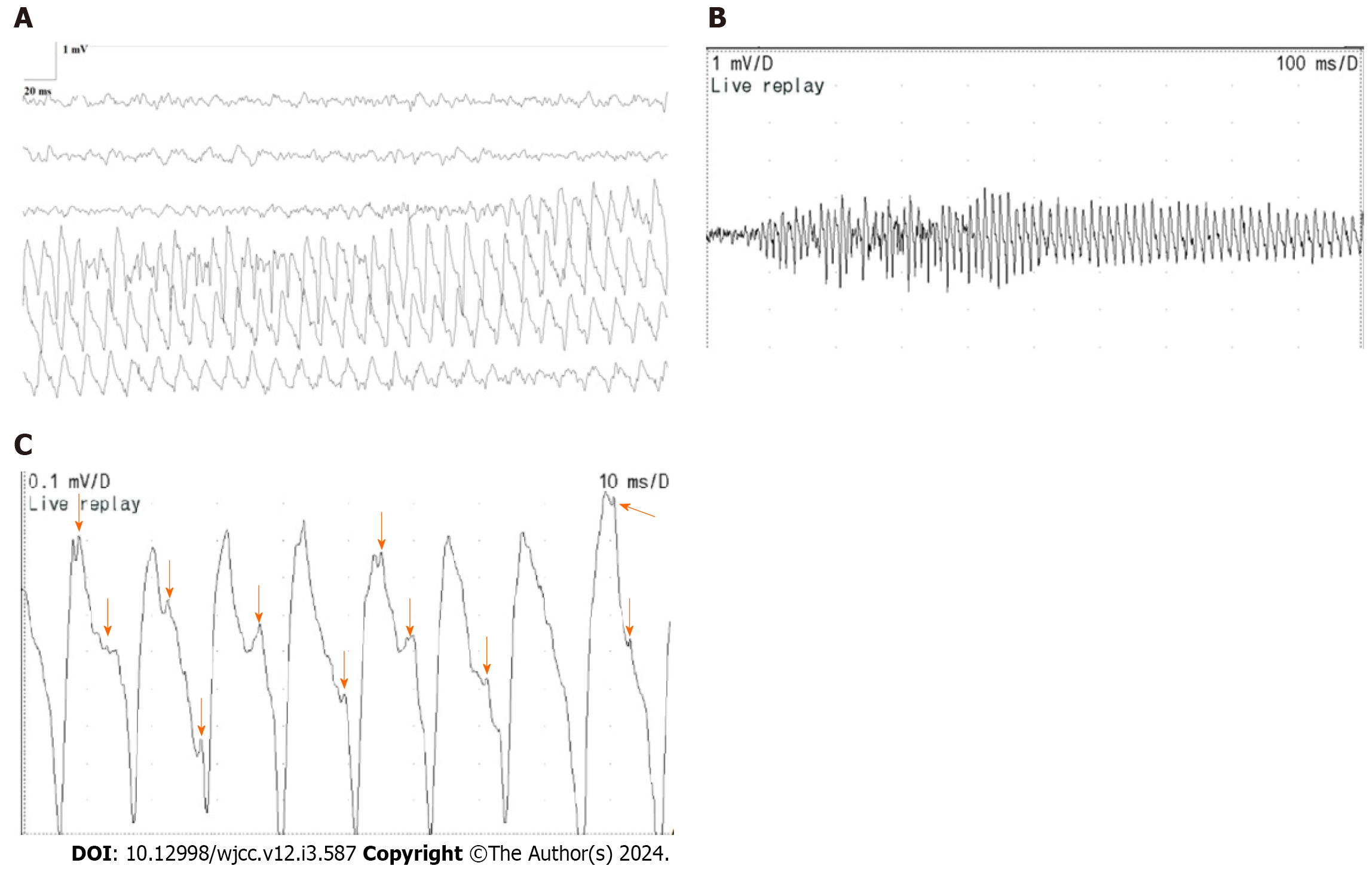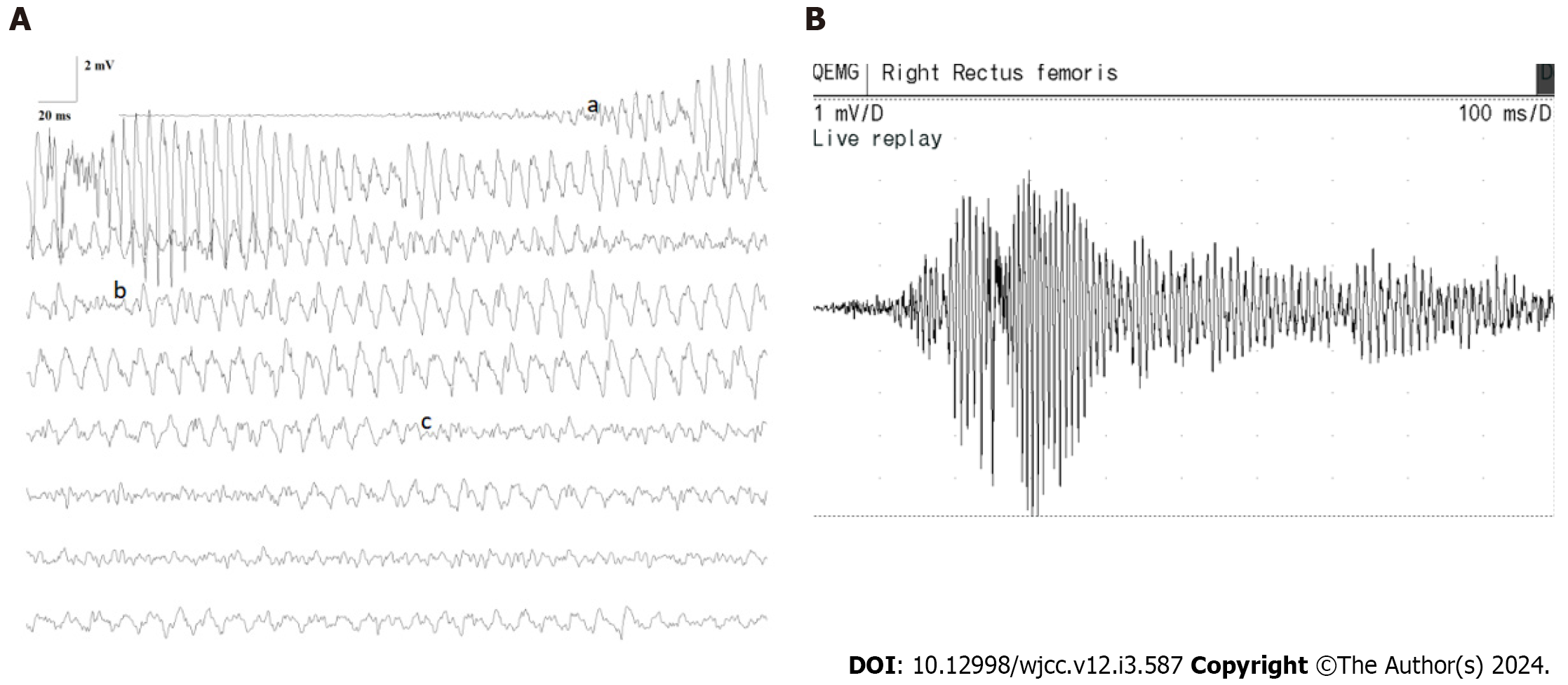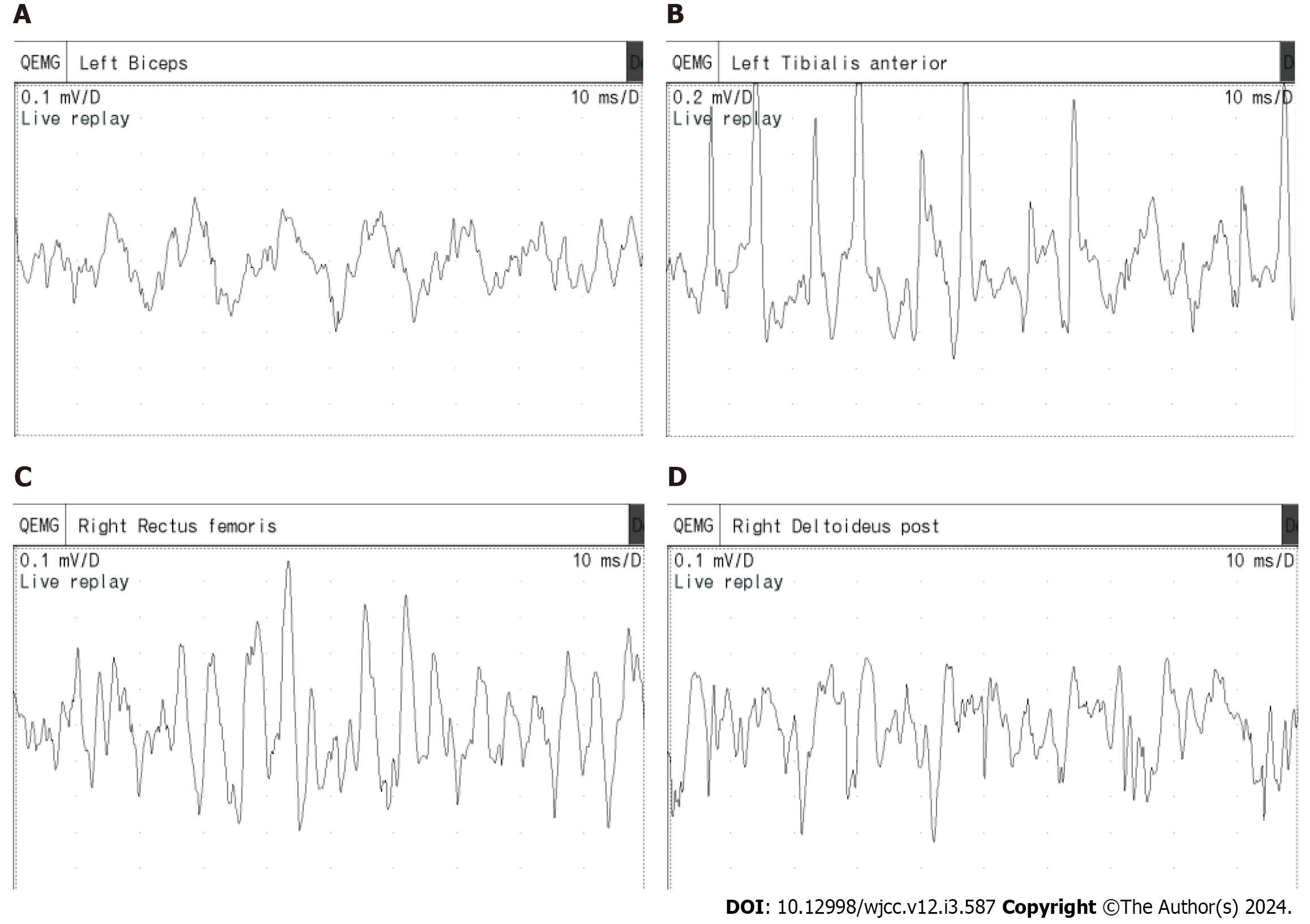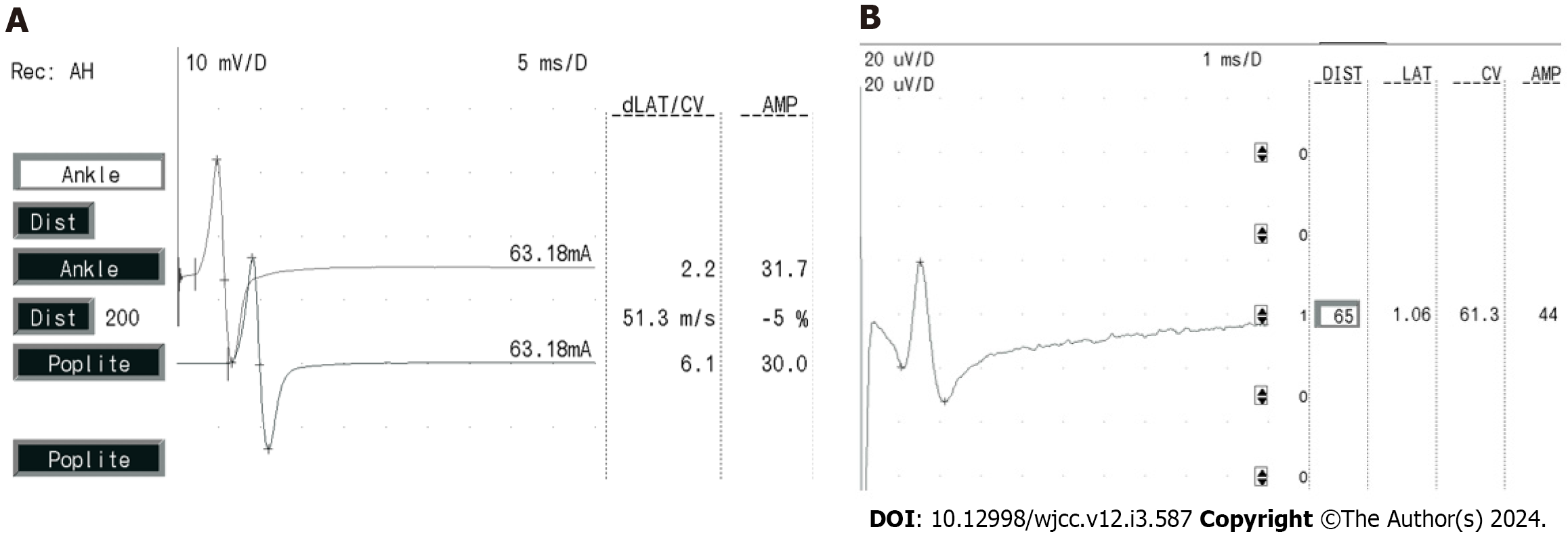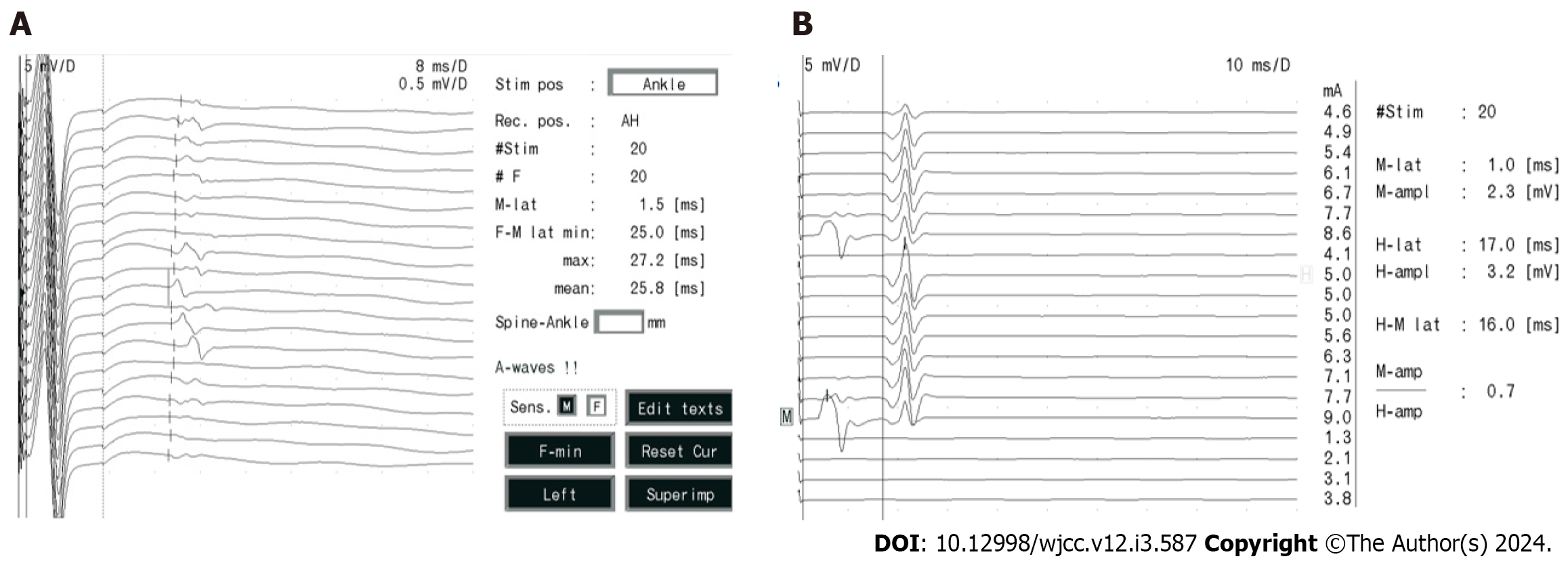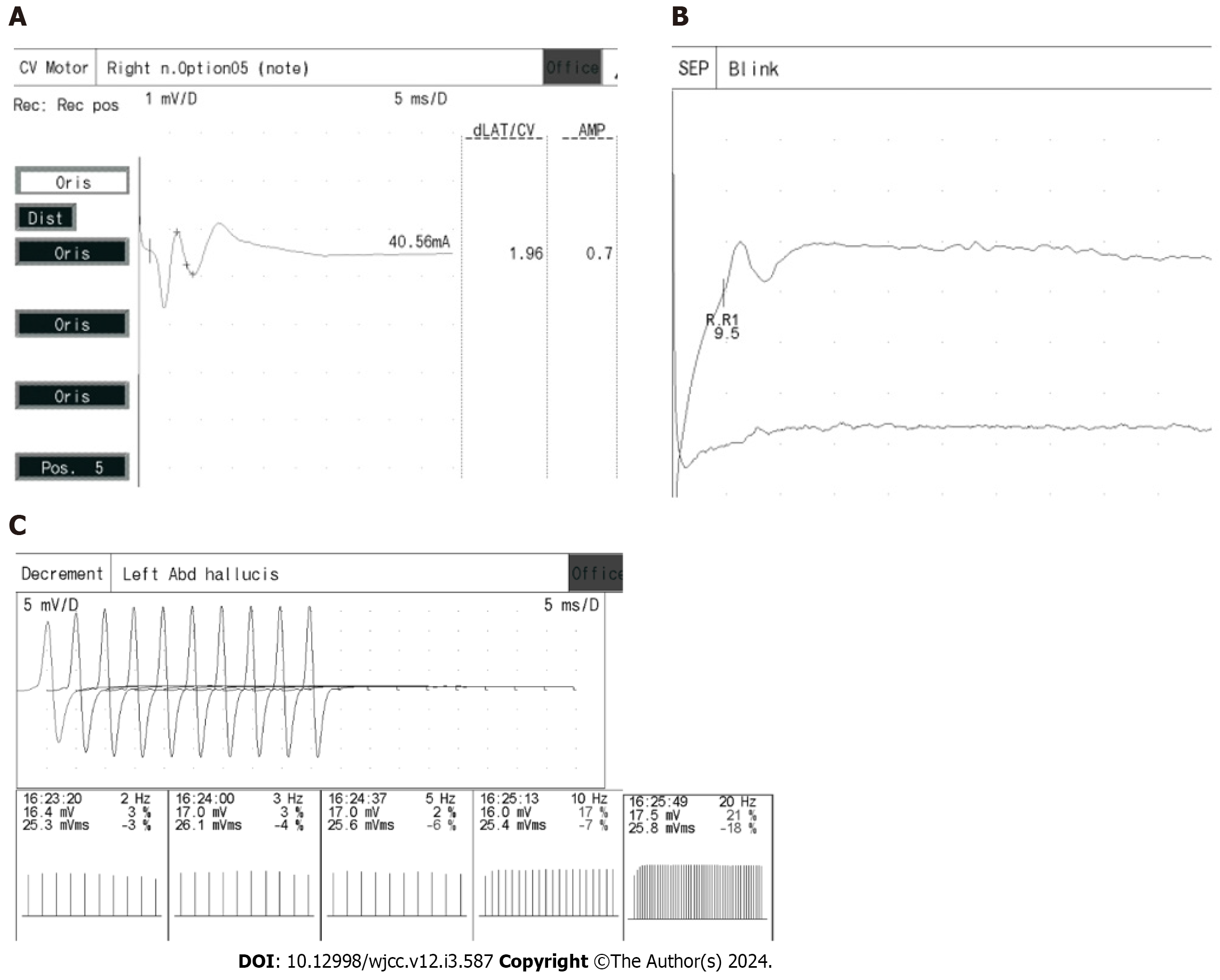Copyright
©The Author(s) 2024.
World J Clin Cases. Jan 26, 2024; 12(3): 587-595
Published online Jan 26, 2024. doi: 10.12998/wjcc.v12.i3.587
Published online Jan 26, 2024. doi: 10.12998/wjcc.v12.i3.587
Figure 1 Right rectus femoris (horizontal bar 20 ms/D, vertical bar 1 mV/D; horizontal bar 100 ms/D, vertical bar 1 mV/D; and horizontal bar 10 ms/D, vertical bar 0.
1 mV/D). A: Right rectus femoris (horizontal bar 20 ms/D, vertical bar 1 mV/D). The train of positive waves in myotonic discharges, displaying fluctuations in frequency and amplitude, with a frequency range of 70-150 Hz and an amplitude range of 0.5-3 mV, is depicted; B: Right rectus femoris (horizontal bar 100 ms/D, vertical bar 1 mV/D). A section of the train of positive waves in myotonic discharges showcases an oscillating pattern in amplitude and frequency, characterized by a rapid surge followed by a gradual decline; C: Right rectus femoris (horizontal bar 10 ms/D, vertical bar 0.1 mV/D). This represents a small section of the train of positive waves within myotonic discharge depicted in Figure 1B. A complete positive wave is visible, and the arrows denote the presence of negative phase waves, each exhibiting varying frequencies and shapes.
Figure 2 Right rectus femoris (horizontal bar 20 ms/D, vertical bar 2 mV/D; horizontal bar 100 ms/D, vertical bar 1 mV/D).
A: Right rectus femoris (horizontal bar 20 ms/D, vertical bar 2 mV/D). a: Train of giant-amplitude of myotonic discharge displaying waxing-waning patterns in frequency (100-150 Hz) and amplitude (3-15 mV); b: Train of positive waves within myotonic discharge, with frequency (100-150 Hz) and amplitude (0.5-3 mV); c: Train of irregular waves within myotonic discharge, characterized by irregular frequency and waveform, with amplitude (0.2-2 mV), and challenging frequency estimation; B: Right rectus femoris (horizontal bar 100 ms/D, vertical bar 1 mV/D). Sequence of giant-amplitude myotonic discharge with sudden initiation and cessation.
Figure 3 Trains of irregular waves within myotonic discharge across different muscles.
A: Left biceps; B: Left tibialis anterior; C: Right rectus femoris; D: Right deltoideus post.
Figure 4 Right tibial nerve and left median nerve.
A: Motor nerve conduction velocity and compound muscle action potential of the right tibial nerve; B: Sensory conduction velocity and sensory nerve action potential of the left median nerve.
Figure 5 F-wave and H-reflex of the right tibial nerve.
A: F-wave of the right tibial nerve; B: H-reflex of the right tibial nerve.
Figure 6 Facial nerve and left abductor hallucis digitorum.
A: Compound muscle action potential and motor nerve conduction velocity of the facial nerve; B: Blink reflex (at sedation); C: Repetitive frequency electrical stimulation results of the left abductor hallucis digitorum [low-frequency (2 Hz, 3 Hz, 5 Hz) and high-frequency (10 Hz, 20 Hz) were normal].
- Citation: Yi H, Liu CX, Ye SX, Liu YL. Special electromyographic features in a child with paramyotonia congenita: A case report and review of literature. World J Clin Cases 2024; 12(3): 587-595
- URL: https://www.wjgnet.com/2307-8960/full/v12/i3/587.htm
- DOI: https://dx.doi.org/10.12998/wjcc.v12.i3.587









